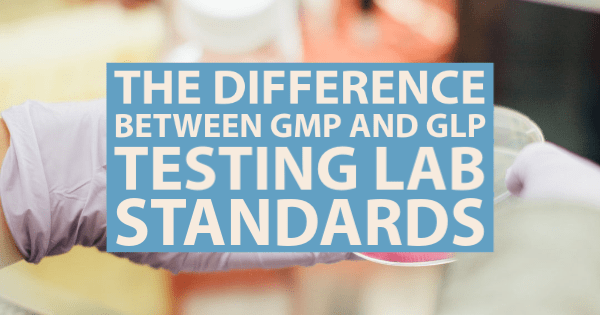
Currently, the United States holds more than 45% of the total global pharmaceutical market. However, despite maintaining this foothold, there can still be confusion based on the differences between GMP and GLP testing lab standards and regulations. While both are testing laboratories, they are very different when compared and contrasted against each other.
The Differences
Simply put, GMP standards are in place to assure and determine if FDA regulated products are being held to the standards they need to. This GMP quality control helps to ensure that all regulations and manufacturing guidelines are being met without failure.
GLP testing laboratories, on the other hand, have a focus on preserving data that can then be used to provide a record of compliance to both the FDA and the EPA. Thus a GLP testing lab focuses less on the quality control itself and more on providing documented accounts of research and study.
This means that most quality and conformance testing is handled by GMP quality control labs, while safety and efficiency are tested under GLP laboratory standards. However, in some cases validation studies of a product can be conducted under either GLP or GMP depending on the product and what specifically needs to be validated. In some cases, either may be sufficient.
The History of GLP and GMP
GMP — Good Manufacturing Practices — were initially developed to solve the problem of unsafe medical problems and quality failures. For instance, in 1941 nearly 300 deaths were caused by sulfathiazole, a short-acting antibiotic, that had become tainted. Furthermore, in 1960, the resulting birth defects stemming from thalidomide, forced stricter regulations, finally resulting in the codification of current GMPs in 1963.
GMP standards have since been expanded and updated to include modern methods and experience. Most in the pharmaceutical and medical industries are familiar with the FDA provided and mandated GMPs; however, the World Health Organization, as well as other countries, also host their own specific requirements.
GLP — Good Laboratory Practices — arose in 1976 and 1979 in response to growing discrepancies in safety data that was meant to support the marketing of pharmaceuticals and certain pesticides. Because there were no existing protocols for this documentation, inadequate data had become a major issue that prompted the EPA and FDA to act. As with GMP regulations, GLP testing laboratory standards have since been implemented throughout many other countries to ensure proper research and safety documentation.
Vitally Necessary
While they both hold similar positions, both GMP and GLP testing lab standards are vitally necessary for both safety and quality control. As shown in history, without these regulations it can be easy for unsafe products to make it into markets for public use and consumption. These regulations and practices help to ensure that all pharmaceutical consumer products are safe and documented for the utmost transparency and quality.
